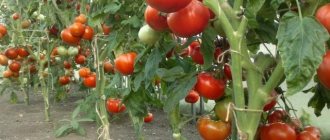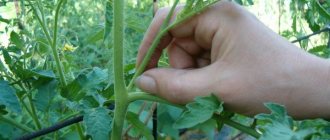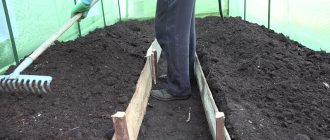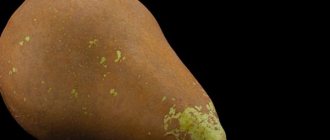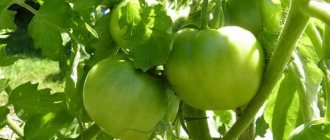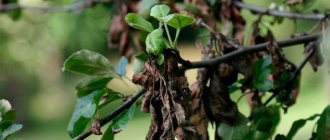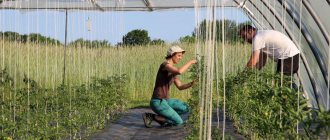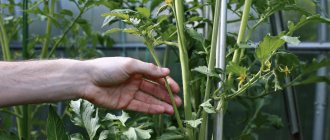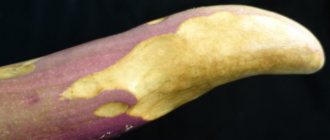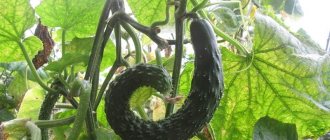Vegetable growing » Tomatoes
0
2215
Article rating
Kira Stoletova
Tomatoes turn black on the bush
If the tomatoes on the bush turn black, this means that the plant is experiencing discomfort, most often it is a lack of nutrition or violation of the rules of agricultural technology. In addition to the fact that such a state of the crop is already a disaster in itself, there is also a risk that the disease will spread to the soil and infect new plantings.
Why tomatoes turn black and what to do about it
The tomato belongs to the nightshade family, relatives include potatoes, eggplants, and peppers. Growing these crops requires adherence to agricultural technology: climatic and weather conditions and soil conditions should be taken into account. The technology of care depends on the place of growth of the crop.
There are many reasons why dark spots appear on tomato fruits, the first being diseases.
Diseases of nightshade plants:
- late blight;
- gray rot;
- stem necrosis;
- crown rot;
- Alternaria blight (macrosporiasis, brown, dry, brown spot);
- watery rot;
- anthracnose
Let's look at each one in detail.
Phytophthora as a cause of blackening of tomatoes
Late blight is a genus of fungus-like organisms that cause the disease late blight. It affects the leaves, brown spots appear on them, then a white coating. If you do not fight the lesions, the plantation disappears within a week. The disease is not immediately visible on the fruits, but as they ripen, brown spots appear that quickly spread, and the fruits begin to rot.
Causes of late blight:
- High air humidity, fog, dew.
- Sudden changes in day and night temperatures.
- Tight fit.
- Rainy weather.
- Closed space.
- Presence of pathogenic microbes in the soil.
- Seeds with infections.
- Neighborhood with potatoes, eggplants, peppers.
- Lack of copper salts in the soil.
- Violation of agricultural technology.
The problem can be dealt with by using chemical and traditional methods of control.
Apical rot
The disease is not an infection; it appears as a result of dry weather or improper care of tomatoes, for example, overheating in a greenhouse. A brown flat spot forms at the top of the fruit, which gradually increases in size. The bush dries out, the fruits lose moisture and elasticity.
Reasons why blossom end rot develops:
- the amount of nitrogen in the soil exceeds the norm;
- increased acidity;
- excess or deficiency of calcium.
Measures to combat the problem:
- Fertilize tomatoes with potassium sulfate. To do this, dissolve a teaspoon of fertilizer in a bucket of water, water the soil and spray the plant.
- Destroy diseased fruits.
- Treat the soil and bushes with boric acid: dissolve a tablespoon of acid in a bucket of water.
Treat once a week until the symptoms of the disease completely disappear.
Gray rot
The disease predominantly develops in closed ground, greenhouses, and when plants are crowded. When infected, grayish-brown spots with a gray coating appear on the bushes. After five days, the spot increases to 5 cm and spreads along the stem. Vascular necrosis forms on the stems, the plant does not receive adequate nutrition and dies.
First aid for gray rot:
- spread charcoal on the plantation;
- sprinkle the bushes with crushed chalk;
- treat with copper sulfate solution;
- use a 1% solution of potassium permanganate for treatment;
- spray the bushes with 1% Bordeaux mixture.
Stem necrosis
The disease begins at the beginning of the season, when the first clusters form. The plant is covered with elongated brown spots. On sections of the stem, damaged vessels are visible, and visible aerial roots appear in the root part. The leaves gradually darken, a net forms on the tomatoes, and when the bush is shaken, the fruits fall off.
Every second plant dies and the disease enters the chronic phase. Removing diseased plants along with the roots will help prevent the spread of the fungus. Stem necrosis bacteria live in seeds and tops. For safety, the ground is disinfected with a solution of potassium permanganate.
Means of protection:
- Preventive treatment of seeds before planting, soak in a 0.25% solution of the drug “Narcissus”.
- Maintaining optimal temperature in greenhouses, ventilation.
- Cleaning up vegetable waste from the garden.
Alternaria blight
This disease is called by other names: macrosporiosis, brown or dry spotting, brown spotting. Plants become covered with brown spots, which gradually increase to 1.5-2 cm. Over time, the leaves die off, and spots with a velvety coating appear on the fruits. The tomatoes fall off green, the surviving fruits are small in size.
The causative agent of Alternaria is a moldy fungus that forms spores and spreads by air; it loves a humid, warm climate. The first signs of the disease appear after planting the seedlings in the ground. Small white spots appear on the lower leaves. After three days, the disease affects the bush.
Control measures:
- If damaged, treat with fungicides.
- Disinfecting the soil with a 1% solution of copper sulfate will help get rid of the fungus.
- Feed the plantation with mineral fertilizers.
- Tie tall varieties to a trellis.
- Mulch the ground under the bushes with pine needles, hay, and straw.
Watery rot
Another scourge that affects tomatoes is the bacterium Erwinia aroidea. It penetrates into tomatoes through cracks in the skin. This is often due to caterpillars and mice damaging the fruits. Bite wounds contain pathogenic bacteria that destroy tissue. Tomatoes darken, become brown in color, and over time they rot, turning into a liquid mass with an unpleasant odor.
It is impossible to fight watery rot with chemicals. The only remedy is prevention. Carry out the following activities in the garden:
- remove plants infected with rot from the site;
- do not allow plantings to thicken;
- carry out pest control;
- choose seeds that are not damaged by bacteria for planting;
- carry out activities to strengthen the immunity of tomatoes.
Brown spot
A fungal disease, a type of Alternaria blight that affects nightshade plants, another name is cladosporiosis. The first signs become noticeable after flowering.
The upper side of the leaves is covered with light spots; a gray or brown coating is visible on the bottom. The leaves dry out quickly, the bush does not receive nutrition and dies. The fight against brown spot begins with treating the bushes with antifungal agents that contain copper.
Important . Chemicals should be stopped a month before harvest.
Preventive measures will help prevent the appearance of brown spot on tomatoes:
- For planting, choose varieties of hybrid tomatoes that are resistant to fungal diseases.
- Before planting, heat treat the seeds, warm them at a temperature of 50˚C.
- Remove the lower branches of bushes regularly.
- Ventilate the greenhouse every day.
- When watering, water should not fall on the leaves.
- Do not allow the soil to dry out.
- Feed tomatoes with potassium or phosphorus fertilizers.
- Do not fertilize with fresh mullein or bird droppings.
- Remove plant debris from the site.
Anthracnose of tomato leaves
An infectious disease that affects adult bushes. Then the fruits become covered with spots with depressions, the upper leaves wither, and the plant is easily pulled out of the ground.
Preparations based on Bacillus subtilis help fight infection; they strengthen plant immunity.
Disease prevention
It is better to begin the fight against blossom end rot not at the stage of fruit ripening. Preventative measures taken in advance will help avoid defeat.
- It all starts in the seed preparation process. Planting material must undergo etching by soaking:
- in ferrous sulfate (1 g per 1 l) for 24 hours;
- in a solution of 3% potassium permanganate for half an hour, then washed with warm water;
— disinfected seeds are dried to a free-flowing state.
- to give the soil on which tomatoes will be grown an optimal level of acidity, it is limed with slaked lime, dolomite flour or chalk; when planting seedlings in holes, pour a glass of ash on the bottom;
- In order not to let the garden dry out, water the beds in a timely manner; drought prevents plants from absorbing calcium from the soil; In order for hydration to benefit, watering is carried out in the evening;
- to preserve moisture, the beds are mulched using grass, straw, compost, and covering material; update the layer every week;
- if the soil in the greenhouse is too light, it is recommended to dilute it with turf soil and peat; then moisture will evaporate less from the surface;
- Do not overfeed the plants, observing the proportional ratio of mineral fertilizers (especially when planting crops); fertilizing must be combined with watering;
- You cannot add unrotted manure to the soil - it provokes the development of the disease;
- It is not recommended to thicken the beds; when grown in a greenhouse, the bushes must have enough space for air access;
- loosening the soil and removing weeds is a prerequisite; These activities are carried out when the ground dries out a little;
- during the hot season, greenhouses should be ventilated so that the air in the enclosed space does not overheat;
- it is necessary to carry out pinching and form plants in a timely manner; tall bushes need staking;
- you need to protect tomatoes from direct exposure to sunlight; if tomatoes are grown in beds, during hot periods it is recommended to make canopies made of white material over them; In greenhouses, glass roofs are whitewashed with paint.
To avoid physiological diseases, crop rotation rules are followed when growing vegetables. Tomatoes cannot be planted in the same place - it is better to return to the old bed after 3 years on the fourth.
When this is not possible, the area is first sown with green manure in the fall or early spring. White mustard, oats, rapeseed, and alfalfa are excellent for this purpose.
If tomato fruits infected with blossom end rot were found in the greenhouse last season, then disinfection of the entire room and replacement of the soil is mandatory.
How to cure and prevent blossom end rot on tomatoes: video
Other reasons for darkening of tomatoes
In addition to diseases, there are other factors that cause darkening of fruits and leaves.
Improper care
Violation of the following growing technologies leads to the death of plants:
- Uneven watering.
- Incorrect feeding. The abundance or lack of nutrients affects tomatoes equally.
- Tight fit.
- Sunburn. Plants that do not have enough foliage are more likely to be damaged. Therefore, if some leaves were removed due to their damage, the plants should be provided with additional shading.
- Acidic soils . Tomatoes grow in neutral and slightly acidic soils.
Dry soil
The optimal humidity for growing tomatoes is 60-70%; they do not tolerate dry soil. During the growing season, tomatoes are watered differently, depending on the stage of growth.
to water abundantly in two cases:
- during the period of strengthening of seedlings in the soil, during this period the lack of moisture leads to the death of the plantings;
- from the moment of fruit set until fruit ripening.
The rest of the time, water moderately.
Photo examples of tomato care
Aromatherapy is a method of therapy that uses natural essential oils in bulk, that is, treatment is carried out with aromatic substances of plant origin that have an antibacterial, antifungal effect, affect the body's metabolism, and control biochemical processes.
Share link:
- Click to share on Twitter (Opens in new window)
- Click here to share content on Facebook. (Opens in a new window)
- Click to share posts on Tumblr (Opens in new window)
- Click to share on Pinterest (Opens in new window)
Like
Why does it happen that tomatoes turn black in a greenhouse?
Tomatoes are grown in a greenhouse in regions where there is not enough heat and frequent rains. The plants are heat-loving; in cold rainy weather they get sick and disappear. Even in greenhouses, black spots often appear on tomatoes.
Six reasons why tomatoes turn black in a greenhouse and solutions:
- Violation of humidity and temperature conditions leads to the development of fungal diseases. The solution is to water as needed at the root without soaking the leaves.
- Soil salinization occurs when too much fertilizer is applied. The solution is to stop fertilizing.
- The roots are exposed, crawling out, the nutrition is not fully supplied, the tomatoes turn black. The solution is to cover the roots with soil.
- Lack of boron and magnesium in the soil. The solution is to apply fertilizer.
- Fungal infectious diseases. The solution is to treat with Bordeaux mixture or other drugs.
- Lack of ventilation. The solution is to ventilate the greenhouse.
What to do - folk and industrial remedies
What should you do if the tomato flowers turn black and fall off, how to find out what the tomatoes lack to resist the insidious infection, how to spray the tomatoes in order to minimize the damage from diseases. We will consider these and other questions in this section.
First of all, having noticed the symptoms of a disease on a tomato bush, you need to decide whether to remove the entire plant, trim and remove the affected parts of the plant, or treat it with fungicides to kill the fungus.
Attention! When cutting and removing affected bushes and plant parts, you need to be careful. Since careless performance of this work can unwittingly contribute to the spread of the disease to healthy tomato bushes
Late blight
As we have already noted, one of the most dangerous diseases on tomatoes is late blight, which affects plants both in the garden bed and in the greenhouse. The disease is provoked by high humidity and temperature changes. With this disease, all parts of the plant are affected, even the trunk of the tomatoes turns black.
Carrying out protective preventive measures, including the following actions:
- 10 days after planting the seedlings, they are treated with “Ridomil” or “Zaslon”, maintaining the dosage according to the instructions;
- repeated spraying with one of these preparations 2 weeks after the first treatment;
- treatment with biological products as needed.
In addition to industrial means, gardeners use folk remedies to combat late blight, for example, garlic infusion, which is prepared according to the following recipe:
- Grind the garlic in a meat grinder to obtain 1 cup of mass;
- add 1 g of potassium permanganate to the garlic mass;
- dilute the mixture in a bucket of water.
Spray tomatoes with the prepared solution to prevent late blight infection.
Important! Phytophthora spores may be present in the soil, so it must be disinfected in the greenhouse with a solution of copper sulfate
Chemicals and traditional methods in the fight against browning of tomatoes
At the first appearance of black spots on tomatoes, we immediately begin the fight. Some gardeners prefer chemicals, others choose traditional methods.
Chemical treatment methods:
- In case of slight damage, the plantations are treated with a 1% solution of Bordeaux mixture.
- Severely affected plantations are treated with fungicides: “Topaz”, “Champion”, “Integral” and others.
- The bushes are coated with a fungicide solution: a bucket of water, 300 g of CMC glue, 1 tbsp. spoon of fungicide, 100 g of chalk.
- Trichopolum tablets help in the fight against fungi. Dissolve one tablet in a liter of water and spray three times per season.
- After the seedlings have taken root, they are treated with copper sulfate. Dilute two tablespoons of vitriol in a bucket of water.
- Calcium nitrate easily copes with infections. Dissolve one tablespoon of saltpeter in a bucket of water, spray the stems, leaves, and soil around the plants.
- Fitosporin is used to fight infection. The solution is used to treat the soil and seedlings before planting. Subsequently, the plants are sprayed every 10 days.
- If the plantation is severely damaged, use potassium chloride. Tear off parts of the bush affected by the disease and spray the plant with a 1% solution of potassium chloride.
Attention . Treatment with chemicals is stopped at least a month before harvest.
Folk methods of struggle
- Garlic tincture. Grind 100 g of garlic, add water, let it brew. Dilute the tincture in a bucket of water, add potassium permanganate on the tip of a knife, and spray the tomatoes in the evening or in the morning.
- Serum solution. Dilute the whey in water in a 1:1 ratio. Treat the bushes every day for the first two weeks after planting.
- Milk with iodine. Dilute a liter of milk in 8 liters of water, add 20 drops of iodine, and spray the plantation every two weeks.
- Tincture of rotted straw. Pour water over the straw, add 1 tbsp. spoon of urea, leave for three days, spray twice a season.
- Yeast tincture. Dilute 100 g of yeast in 10 liters of water and water the bushes. Repeat if necessary.
- Salt solution with iodine. Stir a glass of salt in a bucket of water, add 20 g of iodine, process the tomatoes once a month throughout the season.
- Piercing with copper wire. Insert a wire into the hard stem of the tomato. Copper affects chlorophyll and improves air flow into the plant.
Features of blackening
Based on the affected area of the plant, it is easy to identify the cause of the disease and successfully overcome it. There are several forms of blackening of tomatoes, for each there is a specific way to combat it.
The tips of the tomatoes are turning black
The tips of the fruits darken not because of diseases, but because of improper maintenance conditions: insufficient ventilation in the greenhouse, “burns” from nitrogen fertilizers, lack of proper pinching of tomatoes.
Compared to other types of blackening of tomatoes, this is the most harmless. With a timely response, the fruits can be revived and good harvest ripening can be achieved.
Leaves turn black
Being affected by pathogenic bacteria, tomato leaves not only darken, but also curl, lose moisture, dry out and fall off. The size of the green area is noticeably reduced, so the process of photosynthesis is rapidly reduced, which can potentially lead to damage to the crop and even the death of the bush.
Leaves turn black due to damage by various fungi, such as:
- late blight;
- macrosporiosis;
- bacterial spot;
- wet and crown rot;
- gray leaf spot;
- septoria;
- tomato wilt virus.
Usually they develop due to improper conditions (excessive or insufficient humidity, temperature changes), but there are cases when the leaves begin to turn black due to unfavorable external factors - subzero temperatures, severe frosts or cool soil. In hot regions, darkening of tomato foliage is associated with high air temperatures and muggy weather.
Tomato leaves are one of the most vulnerable parts of the bush. If the foliage of a bush begins to turn black, this can be an alarming signal: you need to urgently respond and carry out appropriate treatment, otherwise the fungus can quickly spread to the fruits and trunk.
Treatment of spoiled bushes should be carried out with chemical or biological preparations; other methods will be ineffective. As for tomatoes growing in warm regions, they cannot be cured: they must be removed and the diseased bushes burned.
On the root
The cause of black roots or root collars is most often blackleg damage (root rot) of tomatoes. The first disease is associated with excessive watering and planting density, the second is caused by a number of factors: mechanical damage to the roots or neck, sudden temperature changes, planting seedlings in cold soil, and the rapid proliferation of pathogenic microbes in such an environment. Blackleg lesions can be eliminated by treatment with a medicinal drug. To get rid of root rot, you need to take the following steps:
- carry out disinfection with a chemical solution;
- remove diseased seedlings (bushes);
- mulch tomatoes in a greenhouse or open ground for the germination of new, healthy roots.
Do you do preventive treatments for tomatoes?
Yes
No
Why does the stem turn black?
Tomato stem necrosis and darkening is an extremely severe form of plant wilting. Usually, before the stem begins to turn black, there is extensive spread of the fungus, so it will be very difficult to ignore the deteriorating condition of the tomatoes: most of the leaves will turn black and dry out, and the fruits themselves will begin to deteriorate right on the branch. Thus, blackening of the trunk of tomatoes is more likely a consequence of general damage to the bush, and not the first sign of the disease.
The cause of the disease will need to be judged by the degree and nature of damage to other parts of the tomato: foliage, fruit, and root collar. This is the only way to accurately determine the type of fungus and select the appropriate drug for treatment.
Why do green tomatoes turn black?
If blackening is present only on the surface of the fruit, then the problem lies in improper maintenance conditions: a deficiency of minerals in the soil, an excess of nitrogenous fertilizers. In this case, spraying with saline solution will help.
In the case when not only green fruits are affected, but also the leaves around them, then we are talking about the proliferation of a pathogenic fungus: late blight, gray or apical rot. To eliminate it, you should treat it with a chemical preparation (for each type of fungus - a specific product).
Tomatoes turn black after harvest
Tomatoes, in principle, are not suitable for long-term storage; over time, all the fruits quickly turn black, so immediately after picking them, you need to select specimens with a good uniform color, and those that have brown/black spots or inclusions should be eaten first.
If it seems that the collected tomatoes are turning black suspiciously quickly, then the fact is most likely that the plant was infected with fungal spores of fusarium or anthracnose while still in the garden. Such tomatoes can continue to be eaten by cutting off the excess darkened parts of the fruit.
Why do picked tomatoes turn black?
It happens like this: you harvested a crop, put it in storage and noticed that the fruits were turning black.
The reasons for this phenomenon:
- Insufficient room ventilation, lack of oxygen.
- Incorrect storage temperature.
- Increased humidity in the room.
- Infection of fruits with anthracnose.
Reference . Anthracnose is a fungal disease that affects the plant at maturity. Tomatoes ripen, become covered with light spots, then darken, soften and disappear.
How to treat tomatoes to prevent them from turning black after harvesting
Experienced gardeners, having noticed the disease, harvest the crop at the ripening stage.
Storage tips:
- It is better to pick tomatoes from the bush if they are brown;
- To ensure that tomatoes ripen without problems after they have been picked from the garden, immerse the fruits in hot water at 60˚C for two minutes. Then dry, wipe and place in boxes until fully ripe;
- Throw away diseased fruits, as they will quickly spoil and infect healthy ones;
- for storage, the fruits are picked together with the stalks;
- green fruits are removed before the temperature at night drops to 5˚C;
- affected fruits are stored separately;
- the harvested crop is kept on balconies, in greenhouses, greenhouses;
- When storing, avoid exposure to direct sunlight;
- crops for storage are placed in boxes or on boards;
- ventilate the room, make sure that the humidity does not exceed 80%;
- fruits ripen faster at a temperature of 25˚C.
Preventive measures
Follow agricultural cultivation techniques and you will avoid the appearance of dark spots on tomatoes. Prevention is the right remedy in the fight against disease.
Nine steps of prevention:
- Plant tomatoes in the same place no earlier than after three years.
- Do not use soil after potatoes, eggplants, and peppers.
- Do not plant tomatoes next to potatoes.
- For planting, choose wind-blown, sunny areas.
- Plant bushes at a distance of 40 cm.
- Pinching and pinching.
- Water moderately, do not over-water, and do not allow the soil to dry out.
- Remove plants with diseased leaves and fruits.
- Harvest on time.
Brown spot
A fungal disease in which only the fruit around the stalk is damaged. This occurs due to a violation of the integrity of the shell from rain or wind.
Then blackness affects the entire fruit, and it falls off without reaching maturity. One of the causes of the disease may be feeding with fresh manure.
When brown spot disease occurs, only the leaves and stems of the tomato turn black; they become covered with brown spots with a slight fungal coating. Tomato leaves begin to curl, dry out, and tomato bushes die. The reason may be increased humidity, so it is necessary to reduce watering and spray the tomatoes with Bordeaux mixture.
To prevent illness, the following recommendations must be followed:
- Do not plant tomatoes near crops that are susceptible to diseases, especially near potatoes.
- Keep the distance between bushes about 30 centimeters. This promotes ventilation between the bushes and prevents diseases from spreading quickly.
- Place the beds in sunny, well-ventilated places.
- Do not use the same area for tomato beds.
- After harvesting, burn all plant remains and treat the soil with a copper solution.
- Tomatoes should be fed according to recommendations; oversaturation can lead to blackening of the plants.
- Watering is carried out in the morning so that excess moisture has time to evaporate. Water is poured at the root; it should not get on the leaves and stems.
- If the soil is highly acidic, add chalk and lime.
- Use early-ripening varieties of tomatoes for planting; you can harvest the crop before the bushes begin to hurt.
How to prevent the disease from spreading next year
The problem is easier to prevent than to fight. You notice damaged fruits, blackened leaves, and dried stems in the garden, which means the tomatoes are sick. Prevent the infection from spreading next year.
Precautionary measures:
- plant marigolds, mustard, and calendula in the garden, which prevent the spread of diseases;
- disinfect the soil with a 1% solution of potassium permanganate;
- remove plant waste from the garden;
- prepare healthy seeds for planting;
- choose varieties that are resistant to infections;
- mulch the ground with pine needles, straw, hay;
- treat the greenhouse with a 1% solution of copper sulfate.
Tomato varieties resistant to fungal diseases
Even following all the recommendations will not give a 100% guarantee that the plant will avoid diseases. Therefore, we recommend that you choose seeds that are resistant to fungal diseases. Among them:
- early ripening varieties: Gnome, Chimgan, Orange Miracle, Dubok;
- special varieties: Stolypin, Primadonna, Sovereign, Black Bunch.
Recommendations from gardeners
Experienced farmers have learned to cope with tomato diseases, and everyone has their own secrets.
Katya : “In the greenhouse we fight late blight in this way: we water it once or twice a week, we constantly mulch the soil to retain moisture. The method of warming up the greenhouse helps get rid of fungi. In hot weather, we close the greenhouse for a couple of hours; late blight does not like this.”
Sergey : “I grow tomatoes in a greenhouse, I recently noticed black spots on the bushes. To preserve the harvest, we had to pick off the green fruits. For disinfection purposes, I soaked it in hot water at 60˚C for two minutes and stored it in boxes. Copper sulfate was splashed in the greenhouse.”
Ivan: “I fight tomato disease in my grandmother’s way - I spray it with milk and iodine. As soon as I notice signs of disease, I pick off all the fruits. Then I prepare a solution: I dissolve a small bottle of iodine in a bucket of warm water. I immerse tomatoes without cuttings in the solution for 20 minutes, take them out, dry them and store them in boxes. I water the ground and bushes with a solution of milk and iodine.”
Useful tips and reminders
It is necessary to select tomato varieties adapted to a given region, taking into account growing conditions in greenhouse conditions.
In hot and dry summers, until the end of July, the danger of blackening is eliminated. Therefore, you should not be afraid to give your tomato bushes a water shower every few days. This will only benefit them. Then eliminate this procedure.
IT IS IMPORTANT TO KNOW! Electricity tariffs are rising every day. To start saving on electricity today, learn about a legal way to reduce your utility costs by up to 50%! Read more..
Blackening fruits, leaves and shoots should be torn off and removed from the greenhouse.
If it is not possible to change the location of planting tomatoes, then it is recommended to completely replace the soil in the greenhouse every few years. This is due to the fact that diseases accumulate in the soil and will infect tomato bushes.
Do not overfeed the soil in the greenhouse with manure. This can cause the plants to become fat and increase their risk of disease. And this will lead to blackening of the fruits.
It is necessary to carefully monitor the planting of tomatoes in the greenhouse, and, if necessary, react quickly and make the right decisions.
All control and prevention measures will help you get good yields of healthy tomatoes, avoid blackening and harvest everything grown.
TeplizaNaDache.ru


